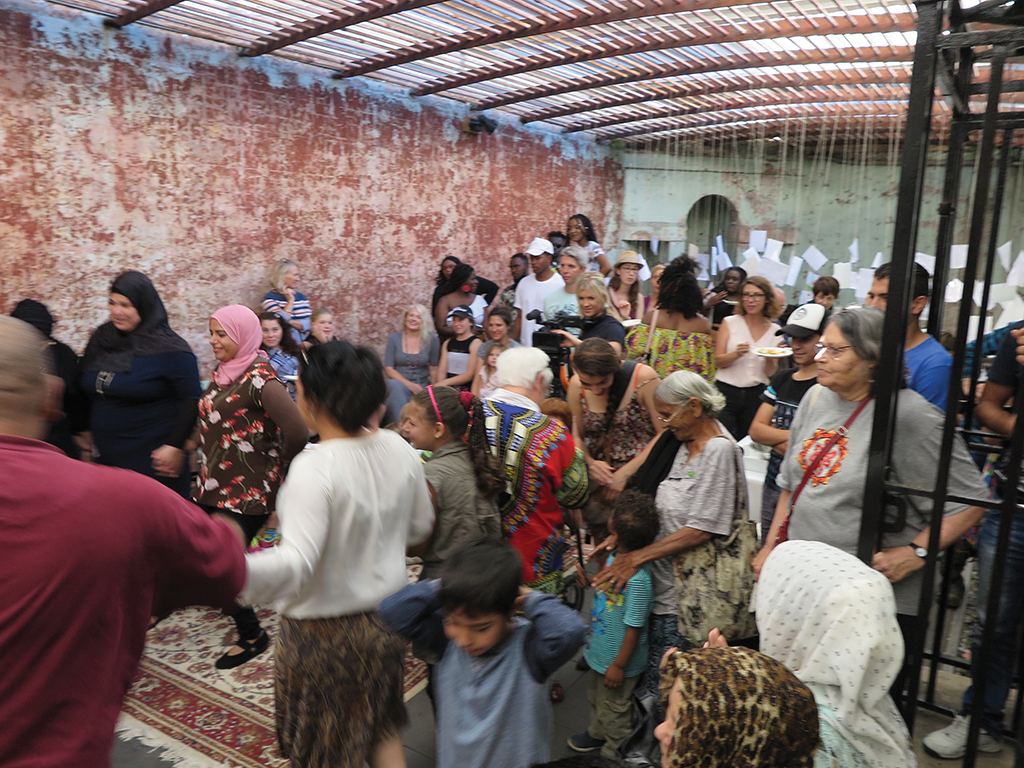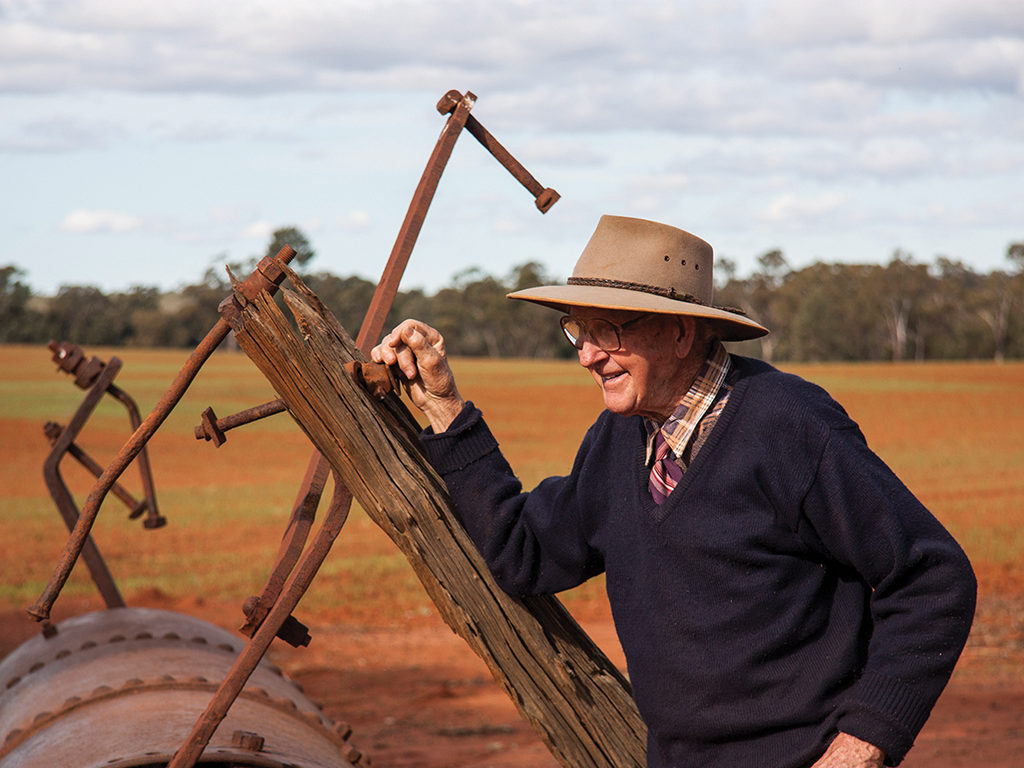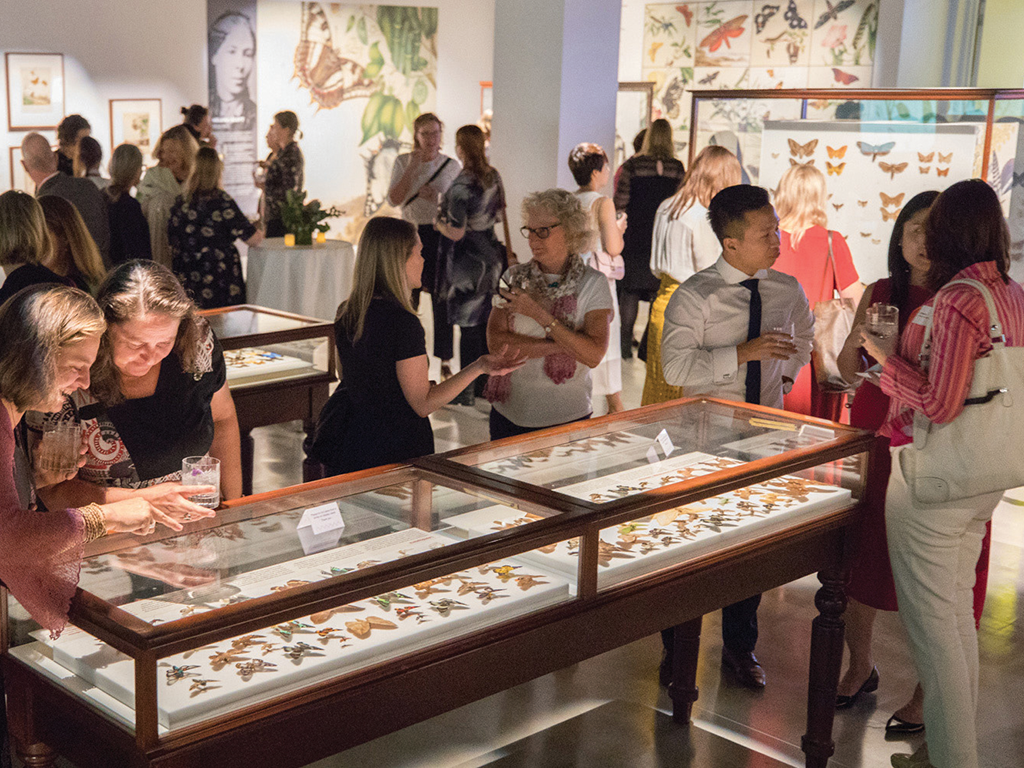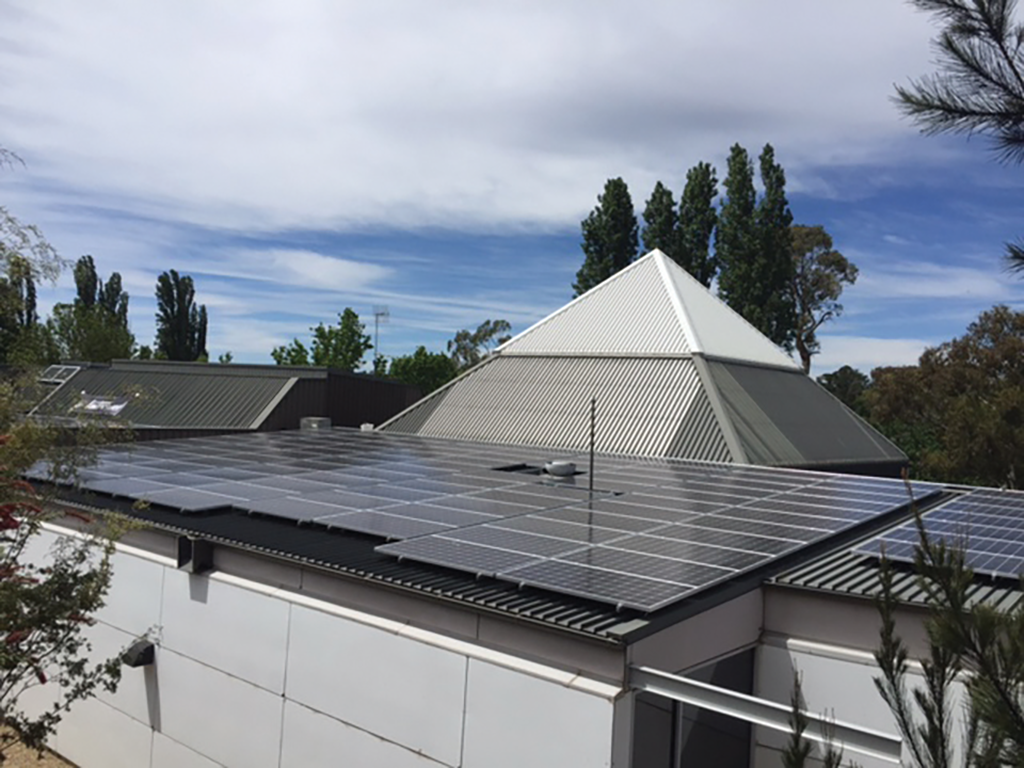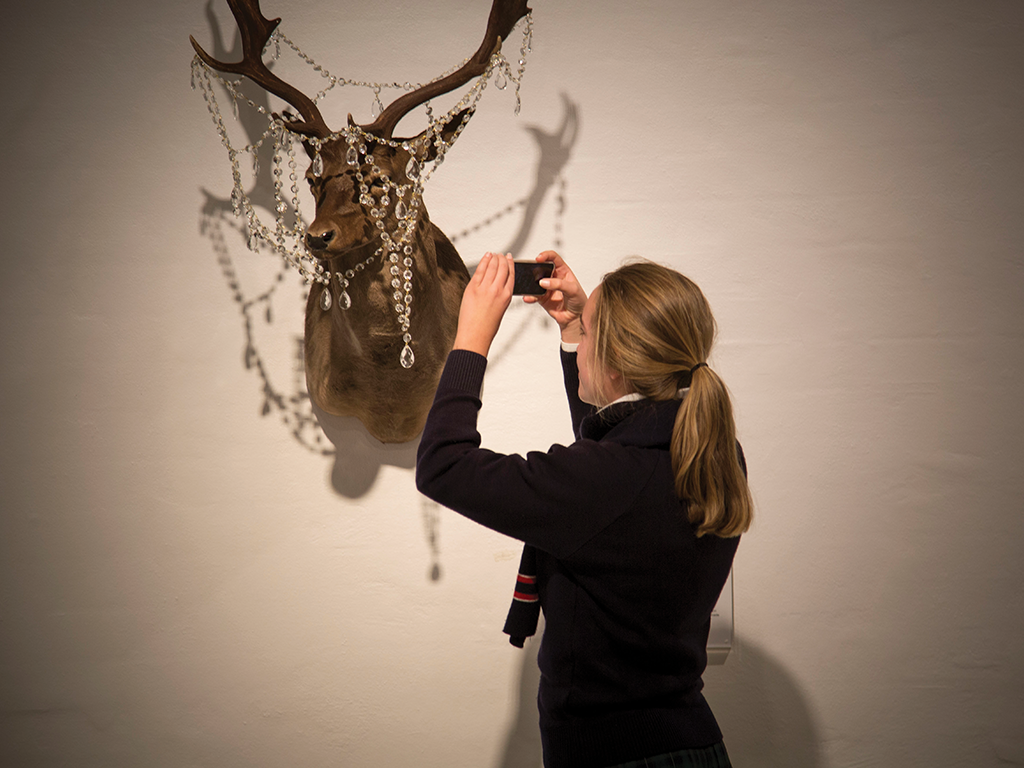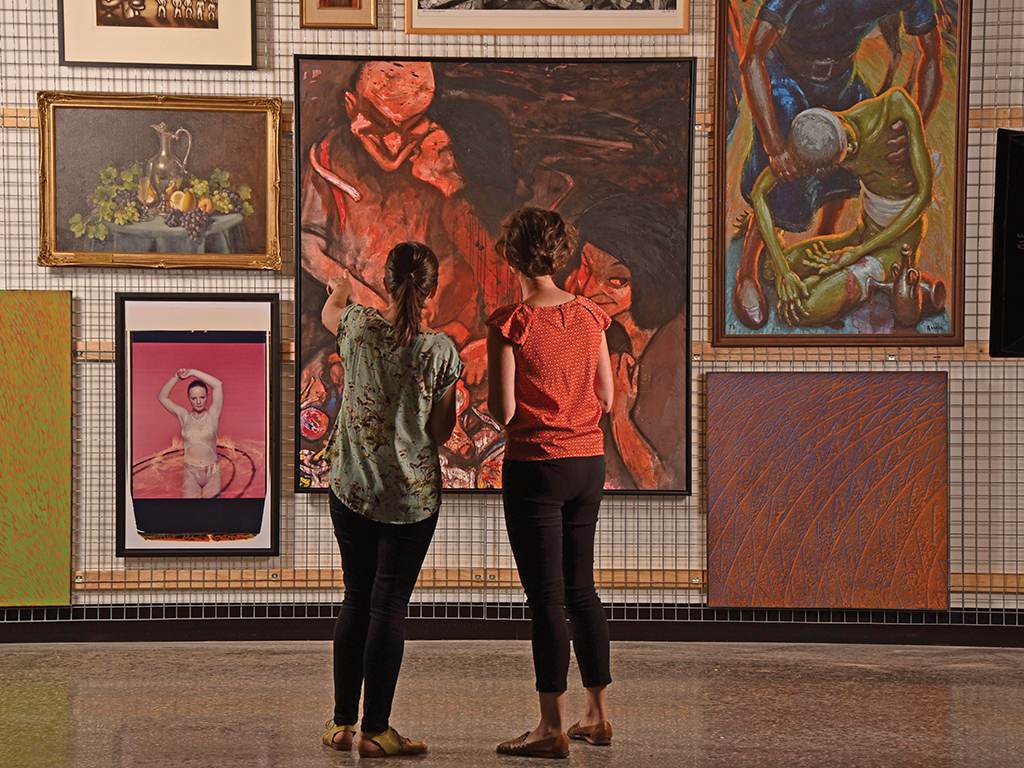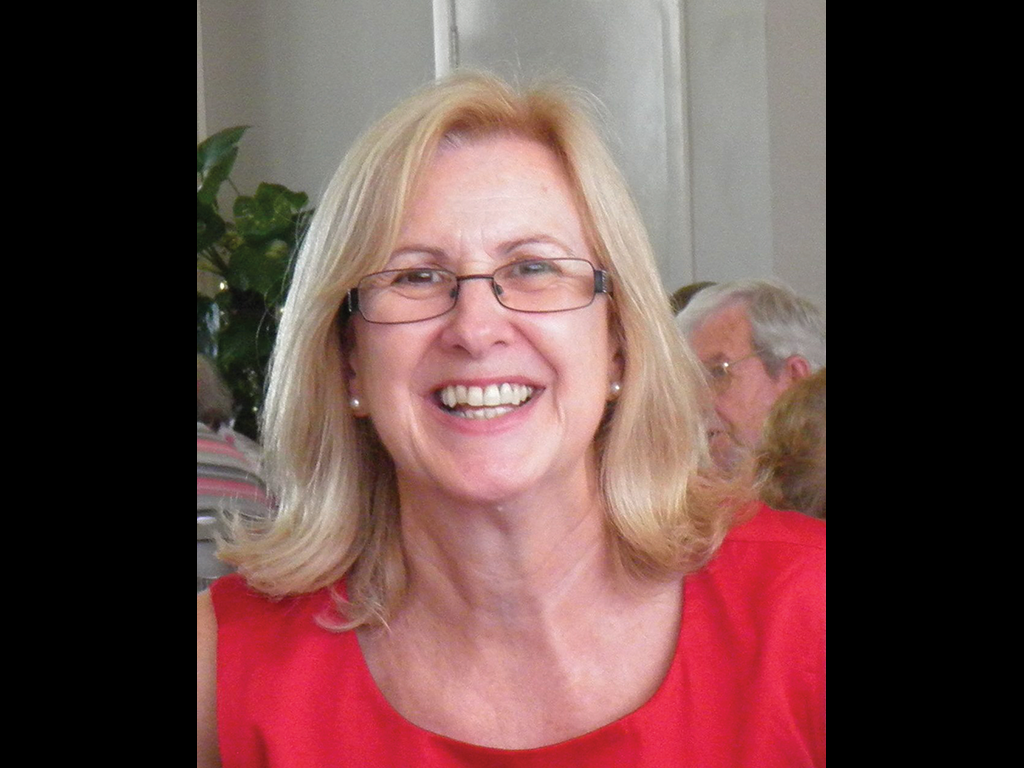Winners 2017
EXHIBITION PROJECTS – GALLERIES: Winner
Hazelhurst Regional Gallery & Arts Centre Nganampa Kililpil: Our Stars - Art from the Anangu Pitjantjatjara Yankunyjatjara (APY) Lands
EXHIBITION PROJECTS – GALLERIES: Winner
Campbelltown Arts Centre Myuran Sukumaran: Another Day in Paradise
EXHIBITION PROJECTS – MUSEUMS: Winner
Fairfield City Museum & Gallery A Home Away from Home: Exploring Fairfield City's Multicultural Clubs
EXHIBITION PROJECTS – MUSEUMS: Winner
Australian Museum Transformations - Art of the Scott Sisters
CBCS PROGRAMS: Winner
Penrith Regional Gallery & The Lewers Bequest and Museum of Applied Arts & Science Gravity (and Wonder)
ENGAGEMENT PROGRAMS: Winner
Tamworth Powerstation Museum Sparking Curiosity and Wonder: A K-6 Visit Experience and Education Kit
SPECIAL AWARD
Jeanette Crew, Chair of Yarkuwa Indigenous Knowledge Centre was awarded for her lifetime contribution to Aboriginal culture in NSW.
| EXHIBITION PROJECTS – GALLERIES VOLUNTEER ORGANISATIONS OR ORGANISATIONS WITH 2 OR LESS PAID STAFF |
Winner
The Lock-Up
Know your neighbour
This exhibition explored migration and perspectives on arrival, using domestic and international experiences as a departure for enquiry. Curated by independent Sydney based curator Ineke Dane, the exhibition featured new and existing works by Abdul Abdullah, Susan Cohn, Hannah Furmage, Oliver Hartung, Seamus Heidenreich, Mehwish Iqbal, the Refugee Art Project, Ella Rubeli and Shireen Taweel.
Public programs created multiple pathways for audiences to engage with the project, particularly those from culturally and linguistically diverse backgrounds, and deepened discourse around project themes.
All aspects of the project were informed by an extensive process of community consultation. This included meetings and collaboration with community members in the lead up to events and providing a free bus service to enable access and participation. New community partnerships with organisations who work directly with refugees and new migrants enabled development of culturally appropriate approaches to programming.
A new partnership with the Children’s University connected children from disadvantaged backgrounds to the project as an alternative education opportunity. The project was partially funded through M&G NSW’s Artist or Curator Residency program which meant an extended period of onsite engagement from Dane.
Highly Commended
Bega Valley Regional Gallery
Young & Free: An Australian Discourse
This curatorially brave exhibition was conceived to address a vacuum of discussion around pressing social issues in Australian society. Timed to ride the national debate that Australia Day brings each year, it showcases artists whose work discusses ideas of colonialism, nationalism, and hot button issues around immigration policy, patriotism and Indigenous affairs.
The artists Abdul Abdullah, Tony Albert, Liam Benson, Joan Ross and Alex Seton were chosen to participate because they are interested in working across mediums and disciplines. This created a dynamic, innovative space in which to explore themes that are hard to quantify, hard to discuss and even more difficult to reconcile. Together these young Australian artists hold up and present issues to audiences that demand reflection, thought, courage and contemplation. The exhibition is designed to provoke audiences to reflect and develop their own opinion on the issues addressed.
This exhibition, conceived and presented within a regional context is unusual in that it doesn’t shy away from themes usually associated with metropolitan living. The Bega Valley is a predominantly Anglo population and is unused to being confronted with contentious issues around cultural identity, race, gender and sexuality. Although the exhibition challenged community norms it was widely supported by both local audiences and those visiting the Bega Valley.
| EXHIBITION PROJECTS – GALLERIES SMALL/MEDIUM ORGANISATIONS WITH 3 – 10 PAID STAFF |
Winner
Hazelhurst Regional Gallery & Arts Centre
Nganampa Kililpil: Our Stars – Art from the Anangu Pitjantjatjara Yankunyjatjara (APY) Lands
This project, produced in partnership with artists from the APY Lands in remote South Australia, was the first major exhibition bringing over 100 artists from the seven major APY Lands art centres together, the first major survey of artists from the APY Lands held in Australia, and the most significant and ambitious exhibition of Indigenous art held at the Gallery.
The exhibition included new and commissioned works in a range of media and was supported with public programs, a short film featuring interviews with the artists, an exhibition-specific website and a free mini-catalogue/poster.
The project was developed in direct partnership with the artists. Artist groups were consulted during the decision-making processes around artwork proposals and steered the direction and wider aims of the exhibition. This collaboration resulted in an overwhelming community response. It gave the APY Lands and artists invaluable exposure with strong media coverage and ensured major artworks were acquired by state gallery collections.
A diverse and largely free public program incorporated education resources about the artists, Pitjantjatjara language, important Anangu concepts and shared creation stories. Several of the artists also gave talks, performances, workshops and interviews at the free Open Festival day.
Highly Commended
Mosman Art Gallery
Tokkotai: Australian and Japanese Artists on War and the Battle of Sydney Harbour
This immersive exhibition experience was staged in a former naval fuel tank on Sydney Harbour and was timed to correspond with the 75th anniversary of the Battle of Sydney Harbour. This Battle, a surprise attack by Japanese submarines on Sydney Harbour, left an indelible mark on Australian identity and the course of our history. In commissioning and developing an exhibition about this important but underexplored topic the Gallery worked with over 300 community members in Sydney, Naoshima and Tokyo. Artists included Michelle Belgiorno, Ken Done, Jennie Feyen, Sue Pedley, Miku Sato and Gary Warner.
The T5 Camouflage Tank is a generally unknown part of the landscape and the project provided a rare opportunity for the public to access this site. The project aimed to animate the space for on-going cultural use. Although not controlled by the Gallery, the project demonstrated the potential of the site for other projects attracting the interest of major bodies including the Biennale of Sydney, Art Gallery of NSW and Kaldor Public Art Projects.
The international collaboration was an unusual and ambitious project for a regional gallery. This approach expanded the project to have an international impact and its consultation with Australian and Japanese communities anchored the project into the collective psyche of both nations.
| EXHIBITION PROJECTS – GALLERIES LARGE ORGANISATIONS WITH 11 OR MORE PAID STAFF |
Winner
Campbelltown Arts Centre
Myuran Sukumaran: Another Day in Paradise
The first major exhibition by Myuran Sukumaran, this project presented the significant body of work he produced while incarcerated in Bali’s Kerobokan Prison, Denpasar and during the final 72 hours of his life, spent on Nusa Kambangan Island.
Alongside over 100 artworks by Sukumaran, the Gallery commissioned artworks by six leading Australian artists; Abdul-Rahman Abdullah, Megan Cope, Jagath Dheerasekara, Taloi Havini, Khaled Sabsabi, and Matthew Sleeth. The commissioned artworks explored the transformative power of art, the death penalty and profiled human rights globally through multiple layers of social justice.
The commissioned artists got to know the Sukumaran family and developed works in response to their developing connection. The exhibition and accompanying symposium series responded to the death penalty and profiled human rights which triggered debate on these contentious issues. The exhibition invites us to consider the power of art to provoke change and how justice could be sought if human rights and rehabilitation were at its core.
Myuran Sukumaran’s story was proof of the true potential for art to change lives. With this concept at its core this exhibition presented his work against the backdrop of one of the most complex and important issues of our time.
| EXHIBITION PROJECTS – MUSEUMS VOLUNTEER ORGANISATIONS OR ORGANISATIONS WITH 2 OR LESS PAID STAFF |
Winner
Fairfield City Museum & Gallery
A Home Away from Home: Exploring Fairfield City’s Multicultural Clubs
This exhibition tells the shared story of many migrants who search for a sense of place and belonging after arriving in a new and foreign land. The exhibition highlights the threads common to diverse migrant stories, as they work together to build a place of sanctuary and a place to share culture and language.
The project featured an exhibition exploring 15 different ethnic clubs, and a series of interactive public programs celebrating cultural diversity including the Living Cultures Festival, Italian Stories of Belonging and Assyrian Stories of Belonging. It was the first time this broad cross-section of the community was drawn together into one exhibition and contributed a collective voice to diverse communities established in Fairfield.
The exhibition combined multiple modes of storytelling featuring art, oral histories, and film, as well as costumes, artefacts and objects reflecting numerous different cultures, complemented by the photography of Helen Tran.
The project’s success is evident as it introduced new communities to the Museum; their responses showed the development of a sense of ownership and belonging. Community groups could celebrate their differences whilst recognising the common threads it takes to make a life in a new land.
Highly Commended
Temora Rural Museum
Bland/Temora NSW Rural Fire Service Community Engagement Centre
This project addresses the compelling need to raise and maintain awareness of the vital service the Rural Fire Service (RFS) provides within the local community. It also aims to cultivate within the public a sense of pride and ownership of the heritage of RFS because it relies upon continual engagement and commitment of new volunteers.
The exhibition is presented as a fully functioning NSW RFS facility that reflects the evolution of the modern rural fire fighting unit. The exhibition provides the visitor with interpretive information explaining its development.
While it is closely associated with the other more traditional emergency service exhibitions developed by the Museum, this Centre sets a new interpretive benchmark as it presents a record of the evolving heritage of a major current organisation in a setting faithful in every detail to its present function.
As a fully functioning component of an active Brigade the exhibition space can, and will, be used to host RFS based activities and events and it is therefore expected to enjoy ongoing support as a vibrant showcase of RFS culture.
| EXHIBITION PROJECTS – MUSEUMS SMALL/MEDIUM ORGANISATIONS WITH 3 – 10 PAID STAFF |
Winner
Museum of the Riverina
Talking Machines
Talking Machines uses film to bring a century of technological and social innovation from rural Australia to light. The project created 43 short films that focus on the machines that transformed regional Australia and capture the recollections of people who still remember using them.
A custom website delivers all the films and specially developed education resources which can be found by searching theme and region. These educational resources are an invaluable resource for high school history teachers. They comprise 43 sets of curriculum-targeted classroom notes aimed at Stage 5 History students learning about the Australian experience of the Industrial Revolution.
By focusing the films around significant machines in the Riverina region, the project intertwines social and technical histories in a fresh and appealing way. It reveals how and where technological advances occurred, and how each innovation changed the shape of rural communities.
Footage was created of old agricultural machines – now preserved by regional museums – fired up and put back to work. Archival footage, photographs and research material were added so that each story was presented in a compelling and vivid way.
The oral histories capture local stories of ingenuity and survival across the Riverina region. They also reveal how global events affected local lives in farms and country towns in regional Australia.
| EXHIBITION PROJECTS – MUSEUMS LARGE ORGANISATIONS WITH 11 OR MORE PAID STAFF |
Winner
Australian Museum
Transformations – Art of the Scott Sisters
This exhibition allowed visitors to immerse themselves in the life and art of two of Australia’s first professional female artists; sisters Harriet and Helena Scott. The exhibition was designed to introduce visitors to these remarkable women, their artistic talent, scientific contributions, struggles and legacy.
Presented side-by-side for the first time, the sisters’ paintings were displayed with the actual specimens they drew. Featuring 41 original artworks and 100s of entomology specimens, the space was enlivened with super-size animations and digital projections of the women’s art.
Notebooks, correspondence, sketches and drawings along with enlarged wall quotes presented each woman’s voice and set the exhibition’s tone – placing their art in the context of women’s struggle for education and recognition as artists, scientists and professionals in nineteenth-century Sydney.
The exhibition used heritage display cases to give a sense of a bygone era. Three commissioned projections, including one animated sequence, brought details of the women’s work and historical portraits to life. These projections were set to a musical score that harked back to the nineteenth century to encourage visitors to contemplate the lives and legacies of the Scott Sisters.
Highly Commended
Sydney Living Museums
Demolished Sydney exhibition and program series
This exhibition and talk series explored key buildings that once shaped the city’s skyline. The project investigated how built identity defines a city and the way each generation values and preserves the heritage of the city they inherit.
Sydney has been in a constant state of building and rebuilding and how we value the city’s heritage has, like the city itself, evolved over time. Demolitions have been a constant part of the city’s evolution and behind every demolition lies the fascinating story of a changing city and its people.
The exhibition connected with visitors on a personal level, tapping into people’s nostalgia for their city. Oral histories and interviews with people who lived or worked at the sites and fought for or opposed the demolitions gave a personal insight into the significance of these places.
These stories highlighted the importance of our city’s heritage and encouraged visitors to recognise and value what remains. They also highlighted the need for cities to change and adapt and prompted discussion about the value of conservation. This unique project encouraged conversation about the heritage of our city and interrogated how and why cities change.
| CAPACITY BUILDING, CAPITAL & SUSTAINABILITY PROGRAMS SMALL/MEDIUM ORGANISATIONS WITH 3 – 10 PAID STAFF |
Winner
Penrith Regional Gallery & The Lewers Bequest and Museum of Applied Arts & Science
Gravity (and Wonder)
Marking the beginning of a long-term partnership this vibrant three month program included an exhibition, artists and scientist residencies and a range of public programs including astronomy, workshops and a symposium focusing on art and science.
The partnership celebrated curatorial excellence throughout the exhibition and increased staff capacity by providing professional development opportunities for each organisation. It also increased equity for Western Sydney and regional audiences by providing access to a state institution and engaged these new audiences by responding to regional needs through the prism of STEAM.
Significant innovations resulting from this project include developing institutional working relationships and enhancing the profile and esteem of both organisations. The residency program paired artists with scientists from Western Sydney University (WSU) to develop new research practice and artworks for a resulting exhibition. These innovations strengthened professional working relationships with WSU and promoted the Gallery as a significant community resource in arts and science education. Media coverage introduced new audiences and the Museum increased its capacity to present and exhibit in the Western Sydney regions.
Highly Commended
New England Regional Art Museum
Sustainable NERAM
This fundraising and capital works program has helped the Museum to raise over $500,000 for major capital works over the past two years. These funds have contributed to major infrastructure developments which have improved the operations of the building and its energy efficiency.
The Museum was originally constructed in 1983 and the building no longer stood up to current standards for sustainability, energy efficiency and design. In response the Sustainable NERAM framework was developed to energise the museum’s supporter base, maximise opportunities for funding and reduce the costs of running the facility.
The program guidelines have supported a number of activities. These include the purchase of LED exhibition lighting systems to replace the incandescent system, support to purchase and install solar panels on the roof and to replace exterior cladding on the building with improved thermal profile. Other activities have included tinting windows, replacing other lighting with LED fittings and installing blinds and panels to reduce natural light and heat loss.
The Museum is currently undergoing a Sustainability Competency & Opportunity Rating & Evaluation (SCORE) to identify gaps in our current practices and procedures and identify opportunities to further improve the sustainability of its operations.
| CAPACITY BUILDING, CAPITAL & SUSTAINABILITY PROGRAMS LARGE ORGANISATIONS WITH 11 OR MORE PAID STAFF |
Winner
Museums Discovery Centre
Shared Museums Collections Storage Project
This unique partnership between Museum of Applied Arts and Sciences, Australian Museum and Sydney Living Museums provides a shared, state of the art, collection storage facility for the three organisations together with a visitor facing facility that explores approaches to Visible Collections Storage. The project provides improved access to the state’s collections and increased educational and social opportunities for the people of NSW and Western Sydney in particular.
The project increases the capacity for participating museums to expand their collections into the future. It also increases the Centre’s capacity to share the treasures of the state’s collections through behind the scenes tours, programmed Open Weekends and day-to-day visitor experiences.
The unique facility supports cross-museum information and skill sharing with collaborative approaches to education programming and public events and shared strategies for collection management, object movement and facilities maintenance.
The Centre increases the capacity of each museum to support sector capacity and sustainability through increased outreach to regional, small and volunteer museums workshops, training programs and professional development opportunities held in accessible, purpose built facilities.
| ENGAGEMENT PROGRAMS VOLUNTEER ORGANISATIONS OR ORGANISATIONS WITH 2 OR LESS PAID STAFF |
Winner
Tamworth Powerstation Museum
Sparking Curiosity and Wonder: A K-6 Visit Experience and Education Kit
In response to feedback from teachers requesting practical, connected, and curriculum linked educational support resources the Museum developed a comprehensive education kit and school experience program.
The core group of volunteers at the Museum worked in the local electrical industry giving them a unique connection to the collection and story the Museum presents. They have not only an historical enthusiasm but the scientific and technical knowledge to bring the exhibits to life for visitors.
A professional Education Officer and consultant worked with volunteers to develop the new resources in response to the changes in school curriculums. The success of this project relied on this consultative process drawing on prior knowledge and skills that were already available.
The quality results were three pronged: a hardcopy publicity document Experience for Primary School teachers that involved augmented reality technology; an online downloadable education kit with pre, during and post visit activities; and a consultation and review process with museum volunteers.
Highly Commended
Illawarra Regional Museums Network
‘Wollongong Heritage and Stories’ Virtual Museum Website and Digitisation Project
This project was a skills development and networking opportunity for the many community museums and historical society collections across the Illawarra. It is the result of a 12 month project funded through an M&G NSW Regional Museum Networking Grant.
Volunteers worked to produce a website showcasing significant local objects and stories. This virtual museum was used to promote the museums and historical societies of the Museum Network to their local communities in order to generate a sustainable network of museums and to focus regional activity.
Through this project four community museums were trained in eHive and were supported to digitise their collections. By providing museum volunteers with training and skills this sustainable model empowered them to take the lead to record their collections rather than relying on external consultants.
Contributing organisations are; Australian Motorlife Museum, Australia’s Industry World, Balgownie Heritage School Museum, Black Diamond Heritage Centre, Breakwater Battery Military Museum, Illawarra Museum, Mt Kembla Heritage Centre, Old Mine Surgery Museum, Illawarra Aboriginal Corporation Cultural Centre and Keeping Place, Virtual Museum of Italian Immigration in the Illawarra, Migration Heritage Project and Wollongong City Library.
| ENGAGEMENT PROGRAMS SMALL/MEDIUM ORGANISATIONS WITH 3 – 10 PAID STAFF |
Winner
Bathurst Regional Art Gallery
Generation Art
This innovative and unique pilot program aimed at the artistic development of youth audiences was developed in partnership with the Australian Catholic University.
Program coordinators invited 11 Year 10 students from local schools to engage in a 14 week enrichment program designed to immerse students in the Gallery’s operations and collection. The students worked with local artists and arts workers to create a suite of digital stories based on the Gallery’s collection.
Attracting and engaging young audiences is an ongoing challenge for galleries. While there are examples of successful approaches and programs in large metropolitan art galleries, there is relatively little research focusing on young audiences in regional Australia. In response to this the project developed a model for engaging young audiences with galleries, specifically in regional cultural sites.
The project had significant educational, artistic and social impact on the students who participated and has generated insights that will inform and enrich the Gallery’s youth programs into the future. The aim of this model is to promote the future engagement of youth audiences as active citizens and cultural learners. The Gallery will run the program again in 2018 and is currently taking expressions of interest from other regional galleries who would like to participate.
Highly Commended
Lake Macquarie City Art Gallery
Lake Macquarie: Living Cultures (working watercraft)
This project represents the launch of an ongoing initiative – a museum with a difference – a space in which, through community consultation and exhibition processes, local histories/stories intersect with contemporary arts and Aboriginal cultural practice, pushing the boundaries of gallery practice and extending audience and community engagement potential.
For a project to embrace community engagement strategies, community partners are essential from the outset. To support successful outcomes for the program, one of which was to ensure the historical elements involved some rigor, the Gallery joined forces with the Community History team at Lake Mac Libraries, members of the East Lake Macquarie Historical Society and the archivist at the Auchmuty Library, University of Newcastle.
Other key community partnerships were with long-term partners and co-creators, the Aboriginal Reference Group (ARG), Hunter-based contemporary artists Luke Beezley and Maggie Hensel-Brown, and contract curatorial assistant Jo O’Toole and researcher Marianne Rogers.
By engaging with community groups and cultural workers as consultants and co-creators the Gallery could access their valuable knowledge and/or objects. This enabled the Gallery to develop a multi-faceted exhibition relevant to many sectors of the community.
Highly Commended
Murray Art Museum Albury
Yours – 70 years of collecting
This series of exhibitions and programs was designed to deepen the relationship between the Museum’s collection, audiences, and staff. The major exhibition of 212 artworks from the permanent collection was complemented by a working registration room and a weekly rotating audience-curated exhibition as well as a mini curating corner for children.
Through exhibition and public program design visitors were invited to come behind the scenes of a working art museum to investigate, interpret and curate their public collection.
The program was designed to engage audiences on a deeper level and asked visitors to consider how a curator might bring works into an exhibition. Inclusion of the registration room revealed the behind the scenes processes, highlighting activity not usually seen by visitors and allowing them to interact with the collection staff at work. Weekly structured collection talks allowed visitors to find out more about particular artworks and allowed the collection staff to highlight works not easily displayed. This format allowed the collection team to speak more broadly about the history and provenance of particular artworks.
The program also featured collection and guest curator talks and a fundraising dinner hosted by the MAMA Art Foundation that articulated the importance of philanthropy in growing collections.
| ENGAGEMENT PROGRAMS LARGE ORGANISATIONS WITH 11 OR MORE PAID STAFF |
Winner
Art Gallery of New South Wales
Nude Live
In a unique collaboration between the Gallery, the Sydney Dance Company (SDC) and Sydney Festival, this program brought dance performance into the gallery space. The program was developed to accompany the exhibition Nude: art from the Tate collection.
Through Rafael Bonachela’s choreography, seven of SDC’s resident dancers responded to the exhibition works. The interaction of performers and artwork profoundly impacted the audience’s experience of the exhibition.
Unusually, the performance was created for the museum space, specifically for an exhibition tracing the history of the nude over 150 years. The limitations of the gallery space became the defining strengths of the show. Multiple pieces took place simultaneously with the audience invited to move around the space freely during the hour-long performance.
Bringing visual arts and dance into such a close and meaningful contact through a specially commissioned collaborative work is unprecedented in an exhibition of this nature. It provided a rare opportunity to see one of Australia’s elite dance companies in creative dialogue with international visual art.
Highly Commended
Museum of Contemporary Art Australia in partnership with PYT | Fairfield and STARTTS (NSW Service for the Treatment and Rehabilitation of Torture and Trauma Survivors)
Women of Fairfield (C3West)
This program explored how women navigate and experience public spaces within Fairfield, a community that shares profound religious, cultural and social differences. Comprising four art projects, developed in collaboration with over 100 local women and 12 community organisations, the program was presented over two nights in public spaces in Fairfield City. Artists worked with local communities for almost a year to create artworks which explored and embraced the complexities of being a woman in Fairfield.
Public artworks were presented in unconventional locations: the main streets, a car park roof top, a shopping centre food court. The project utilised best-practice social engagement methods to ensure meaningful creative exchange between artists and participants. This included close collaboration with STARTTS and its communities, long term consultation with participants, Fairfield Council and Fairfield Chase shopping centre.
In a creative learning program working with two local high schools, female students engaged with the artists’ creative process through workshops. An exhibition of student work at PYT was also presented to coincide with the live art event.
The program increased the visibility of women in Fairfield’s public spaces, engendered new relationships between previously isolated communities and fostered resilience. It provided a platform for self-expression and brought together the diverse communities of Fairfield, forming new relationships and lines of communication between them.
| INDIVIDUAL ACHIEVEMENT: VOLUNTEER |
Debbie Sommers
Port Macquarie Museum
Debbie Sommers has held executive roles for the Port Macquarie Historical Society & Museum for a number of years and now performs the role of Curator for the Museum. Under her guidance the Museum has seen a 12 percent increase in visitation in the last year.
Aside from Debbie’s professionalism what is most impressive is her total dedication to the position and museum. No matter when she is needed she is at the museum and available, easily contributing a 35 hour week in her unpaid capacity. Debbie is the public face of the museum.
Debbie regularly contributes newspaper articles in the local newspaper and the high profile monthly Port Macquarie Focus magazine. She is also integral to progressing ideas with Council, the local tourism association, the Land Council, Government departments and community groups. Debbie undertakes all these tasks whilst pursuing a strong program of excellence and training for all volunteers in museum management processes which derive from both the heritage significance of the site and buildings and the collection.
Debbie has also chaired the Mid North Coast Chapter of Museums Australia and has spearheaded museum development and training across a number of museums in the region. In 2017 she was appointed to the Board of Museums Australia and provides an important voice for community based museums in regional Australia.
| INDIVIDUAL ACHIEVEMENT: PAID |
Richard Perram
Bathurst Regional Art Gallery
Richard Perram OAM has been Director at the Gallery since 2004. Richard’s visionary programming, with a focus on presenting cutting edge contemporary Australian and international art, has established the Gallery as one of the leading regional galleries in the state.
Richard’s strong curatorial focus has seen the development of a range of in-house and touring exhibitions as well as the expansion of the gallery collection. He has also raised significant funds from government and the private sector to support BRAG’s exhibition, publication, and capital works program, including the upgrade of the gallery’s lighting and air-conditioning systems in 2016.
Richard has broad experience in policy development and implementation, human resources, corporate governance and financial management. At a federal level he has developed specific areas of cultural policy and at a state level worked as part of a team to develop a new arts policy for Queensland.
In 2014 Richard was awarded an Order of Australia Medal in the Queen’s Birthday Honours List for services to the visual arts, in particular the museums and galleries sector. This recognition of Richard’s contribution and achievements is a career highlight and speaks volumes about the high regard in which he is held within the Australian arts and cultural sector.
| SPECIAL AWARD |
Jeanette Crew
Jeanette Crew, Chair of Yarkuwa Indigenous Knowledge Centre was awarded for her lifetime contribution to Aboriginal culture in NSW.
Jeanette was born in Swan Hill, Victoria. She spent her early years on Moonahcullah, an Aboriginal Mission outside of Deniliquin, until the community was forcibly moved into Deniliquin in 1961.
Jeanette broke new ground in many areas of her career, from her role as the first Aboriginal Women’s Cultural Heritage Sites Officer in the National Parks and Wildlife Service in Sydney, to her success as the first Coordinator of the Deniliquin Local Aboriginal Land Council. Jeanette served on the Aboriginal Advisory Committee to various organisations including the National Museum in Canberra and the Australian Museum and National Maritime Museum in Sydney. In the late 1980s she was a member of the NSW Ministerial Taskforce on Aboriginal heritage and culture.
One of Jeanette’s major achievements is her work in establishing Yarkuwa Indigenous Knowledge Centre which has now been running since 2003. Yarkuwa exists to collate and maintain traditional knowledge, to act as a base for community development and to provide an education service to the wider community.
Yarkuwa negotiates with government and other agencies on matters relating to culture, heritage, community wellbeing and the environment. Through Yarkuwa and through her involvement in forming the Murray Lower Darling Rivers Indigenous Nations, Jeanette has been strategic in working towards obtaining water rights for Traditional Owners as well as building connections between local communities and government.
Jeanette was also instrumental in the repatriation and reburial of ancestral remains previously held in the National Museum of Australia, National Parks and Wildlife, Office of Environment and Heritage and the University of Sydney, a campaign she was involved with for some 17 years. Jeanette was a member of the International Repatriation Advisory Committee during 2009.
Jeanette is a keen weaver and has been central to the weaving revival in the Deniliquin region, weaving with and teaching elders, peers and young people. Jeanette is the only current Aboriginal Landcare Coordinator in NSW and aims to embed Aboriginal cultural values within Natural Resource Management work, and seek ways of incorporating Aboriginal culture within government and non-government services and to create a strong cultural identity in future generations.
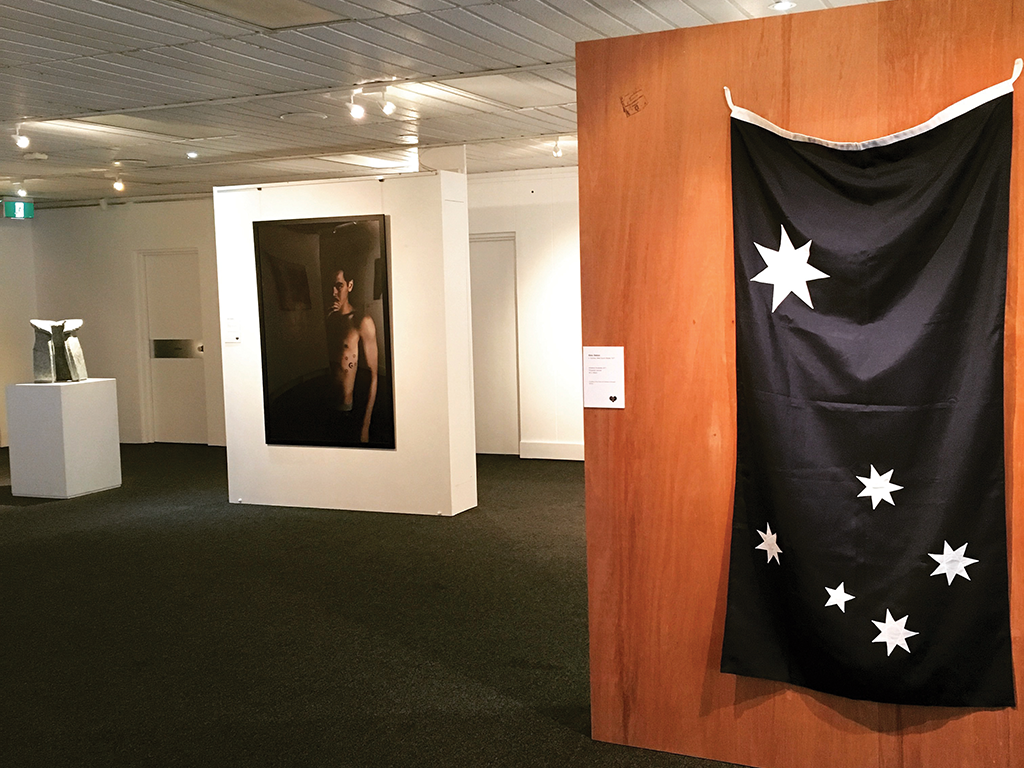
EXHIBITION PROJECTS – GALLERIES: Highly commended
Bega Valley Regional Gallery - Young & Free: An Australian Discourse
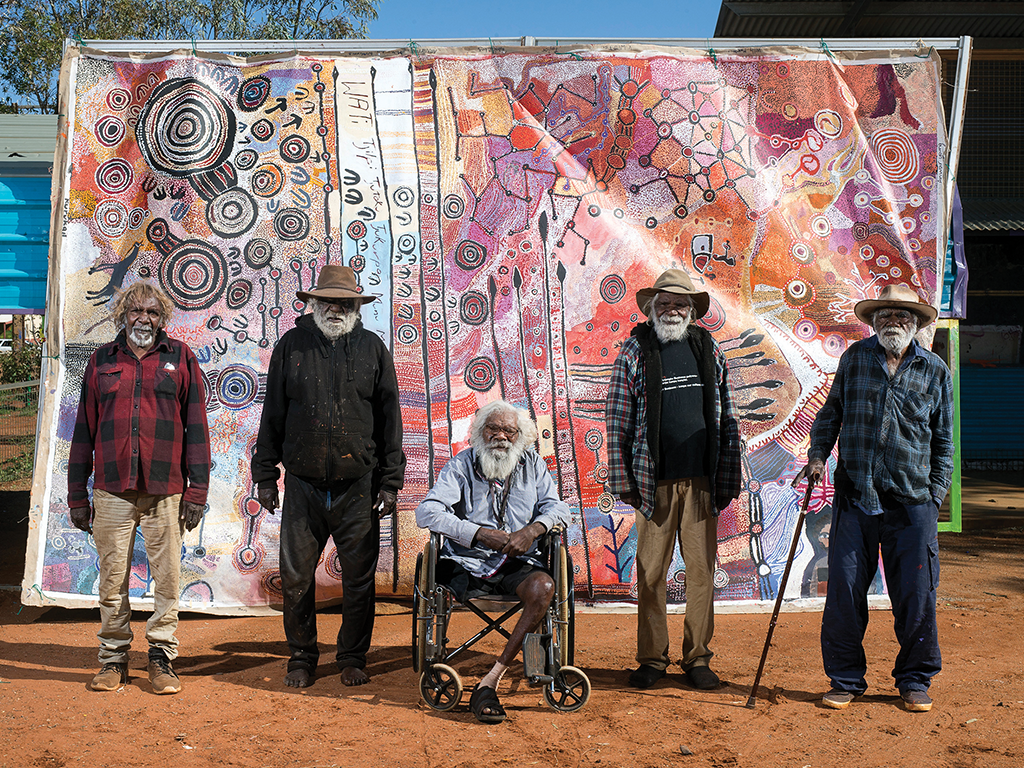
EXHIBITION PROJECTS – GALLERIES: Winner
Hazelhurst Regional Gallery & Arts Centre Nganampa Kililpil: Our Stars - Art from the Anangu Pitjantjatjara Yankunyjatjara (APY) Lands
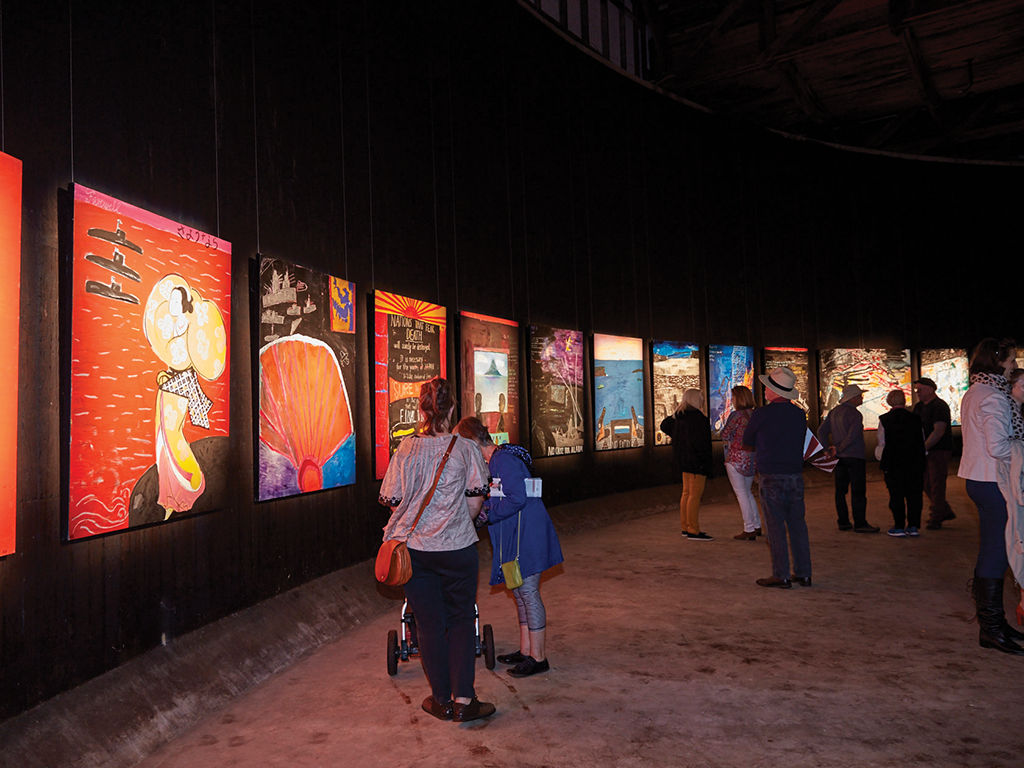
EXHIBITION PROJECTS – GALLERIES: Highly commended
Mosman Art Gallery Tokkotai: Australian and Japanese Artists on War and the Battle of Sydney Harbour

EXHIBITION PROJECTS – GALLERIES: Winner
Campbelltown Arts Centre Myuran Sukumaran: Another Day in Paradise

EXHIBITION PROJECTS – MUSEUMS: Winner
Fairfield City Museum & Gallery A Home Away from Home: Exploring Fairfield City's Multicultural Clubs
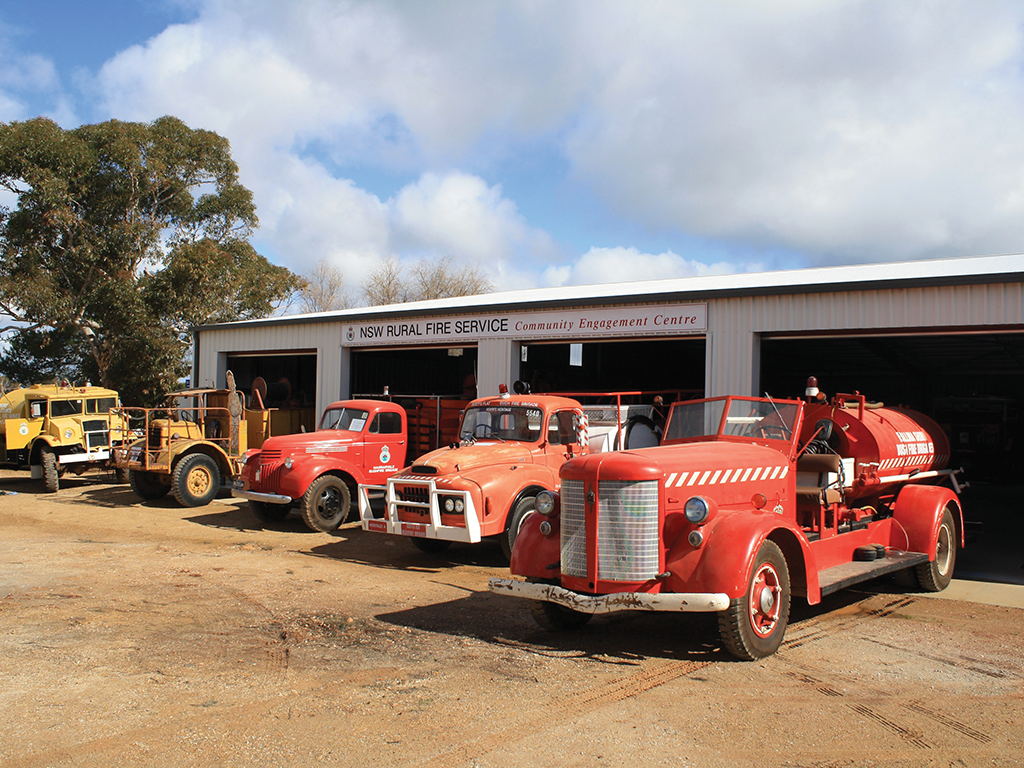
EXHIBITION PROJECTS – MUSEUMS: Highly Commended
Temora Rural Museum Bland/Temora NSW Rural Fire Service Community Engagement Centre
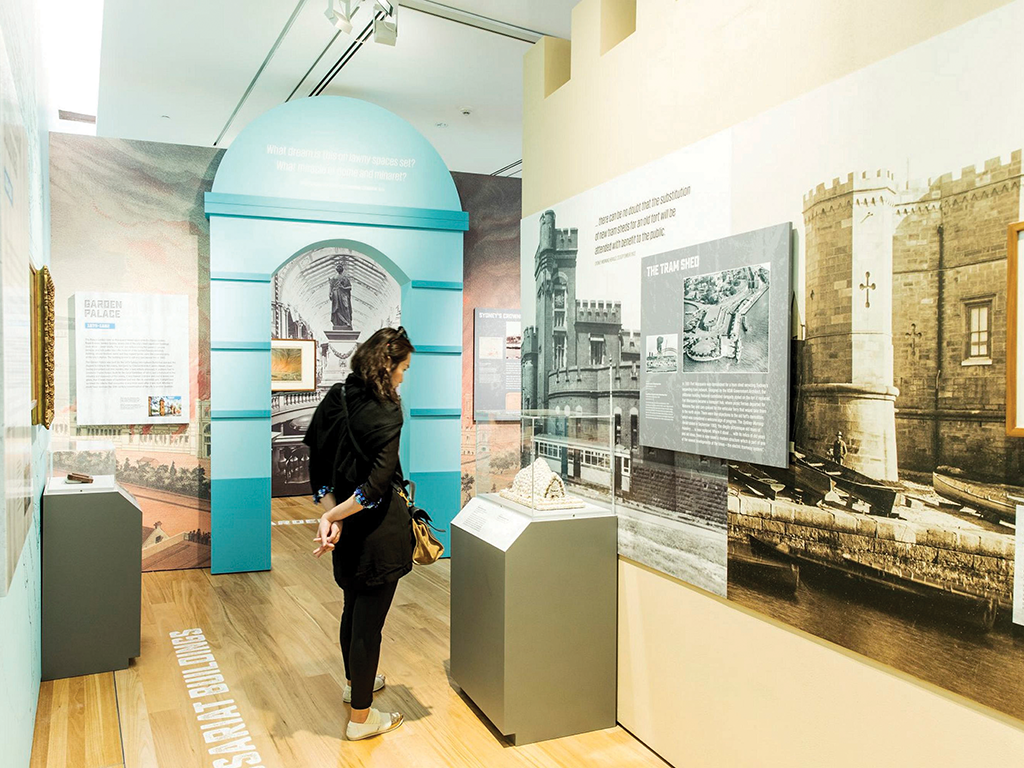
EXHIBITION PROJECTS – MUSEUMS: Highly Commended
Sydney Living Museums Demolished Sydney exhibition and program series
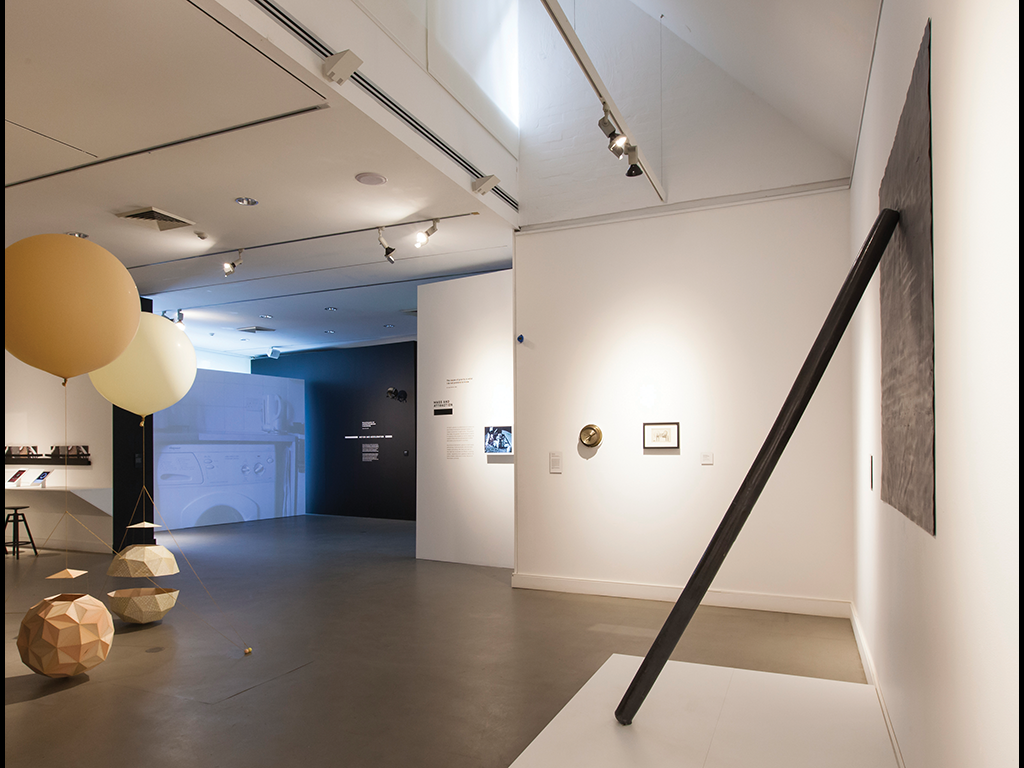
CBCS PROGRAMS: Winner
Penrith Regional Gallery & The Lewers Bequest and Museum of Applied Arts & Science Gravity (and Wonder)
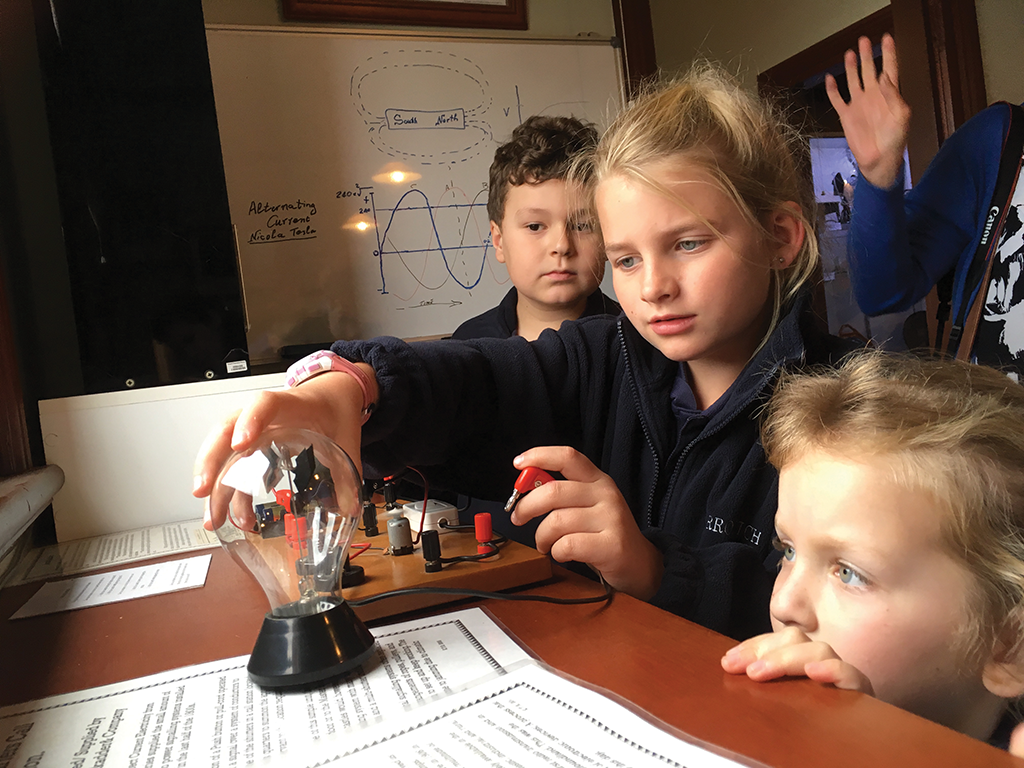
ENGAGEMENT PROGRAMS: Winner
Tamworth Powerstation Museum Sparking Curiosity and Wonder: A K-6 Visit Experience and Education Kit
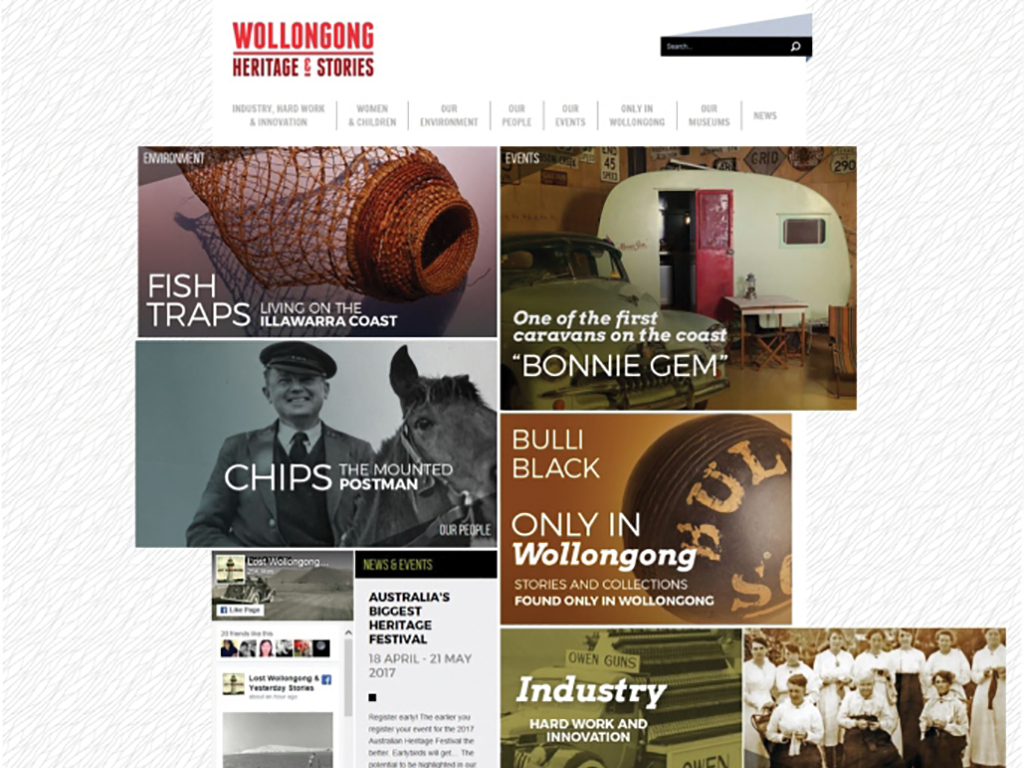
ENGAGEMENT PROGRAMS: Highly Commended
Illawarra Regional Museums Network 'Wollongong Heritage and Stories' Virtual Museum Website and Digitisation Project
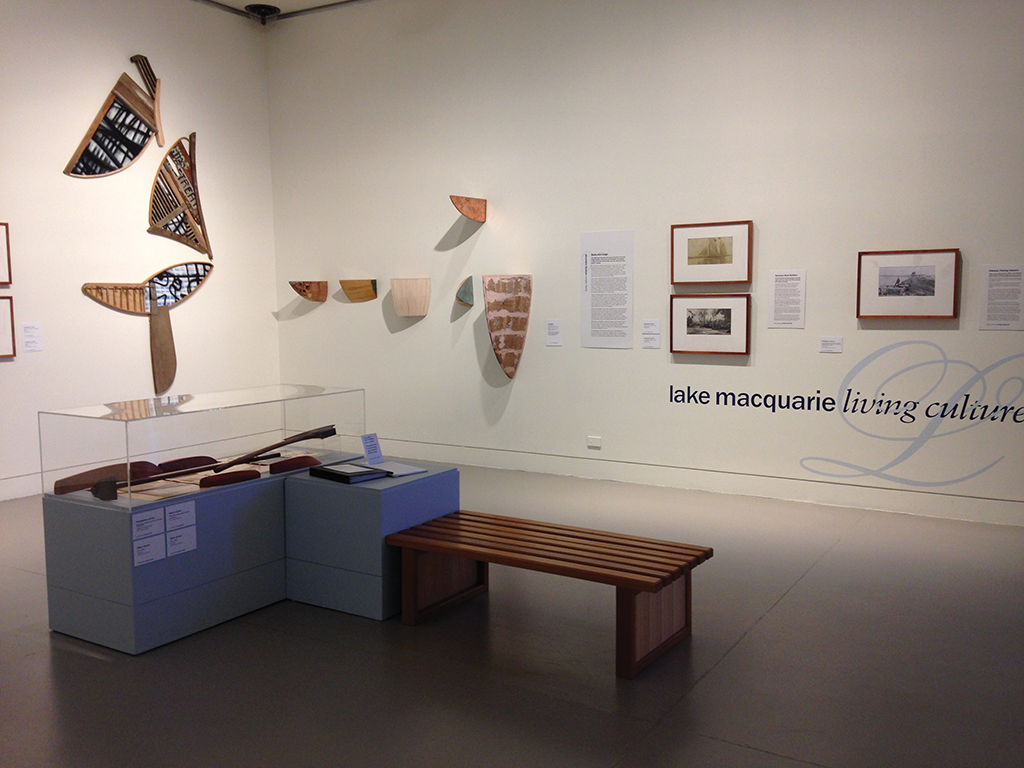
ENGAGEMENT PROGRAMS: Highly Commended
Lake Macquarie City Art Gallery Lake Macquarie: Living Cultures (working watercraft)

ENGAGEMENT PROGRAMS: Highly Commended
Museum of Contemporary Art Australia, PYT | Fairfield and STARTTS - Women of Fairfield (C3West)
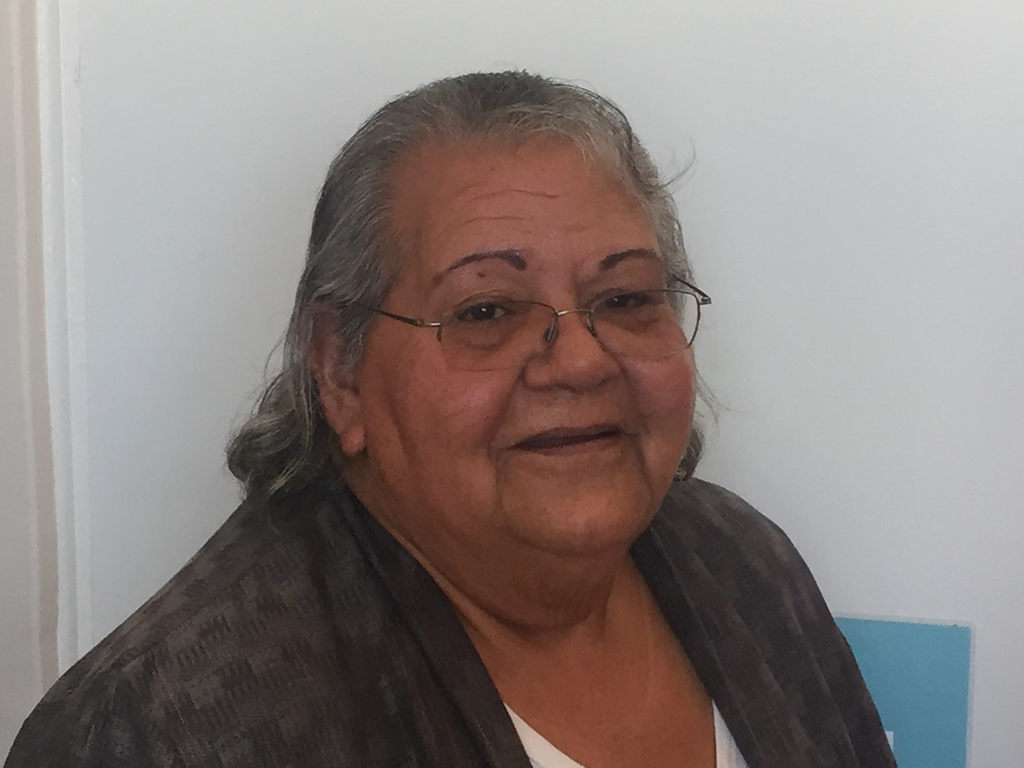
SPECIAL AWARD
Jeanette Crew, Chair of Yarkuwa Indigenous Knowledge Centre was awarded for her lifetime contribution to Aboriginal culture in NSW.

